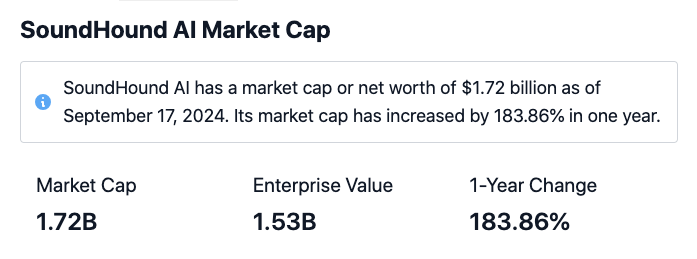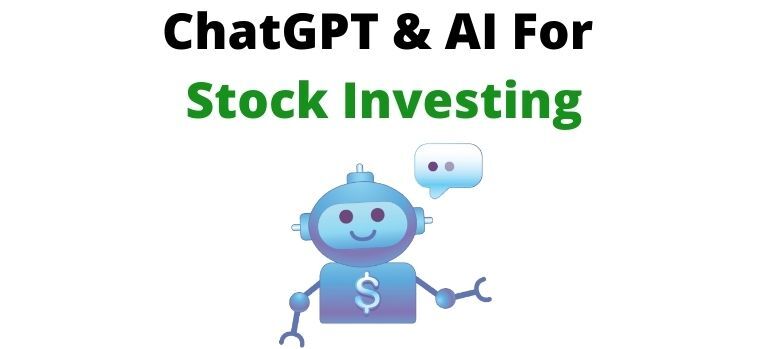Examining the price and cost of AI software for predicting and analyzing stocks is essential to ensure that you are getting the most value from your investment without incurring hidden costs or unexpected expenses. Prices vary widely, so it's important to understand the value you get value for your money. Here are the top 10 tips for evaluating pricing and cost.
1. Understanding the Pricing Model
Subscription-based platforms: Discover the cost of a monthly or yearly fee. Find out what features are included in each level.
Pay-per - use: Verify the platform's charges are based on usage for example, the number of trades (or request for data) or predictions.
Freemium model: Assess if the platform offers an unpaid tier that has only a few features, and charges for premium features.
2. Compare Pricing Tiers
Check out the features offered by each price level, e.g. Basic, Professional Enterprise, Basic.
Scalability: Make sure that the pricing tiers you choose to use are compatible with your requirements, whether you're a trader on your own, a professional or an institutional member.
Upgrade flexibility: Discover if you are able to effortlessly upgrade or downgrade your system as your needs change.
3. Evaluate Hidden Costs
Data fees: Check if the platform charges extra access to premium data (e.g. real-time data or advanced analytics).
Brokerage fees: Find out whether there are any additional charges for the platform to integrate with brokers or execute trades.
API usage: Determine if are liable for additional charges due to high frequency API usage or API access.
4. Demos as well as Free Trials
Trial period - Search for platforms that provide the option of a trial or demo to let you try out the features before you decide to sign up.
The trial's limitations: Verify if it includes all features or if there are limitations in terms of functionality.
Option to not commit: If you don't like the program, you may unsubscribe at any time without cost.
5. Look for discounts and promotions.
Discounts for annual plans Find out if you can get a discount on the annual plan when compared to monthly plans.
Referral Programs Find out whether your platform offers discounts or credits for users who refer others.
Prices for bulk or institutional If your company is large then you might want to ask about bulk and institutional pricing.
6. ROI (Return on Investment): How to evaluate the return?
Cost in relation to. value: Assess whether the features and forecasts of the platform are worth the price. For instance, does it, help you to make better trade decisions or save time.
Track record of performance Review the platform's rate of success or user feedback to gain an understanding of the ROI potential.
Costs of other platforms: Compare the cost of the platform with the cost of using it (e.g. not utilizing opportunities, manual analyses time).
Review Policies on Cancellation and Refunds
You are able to cancel your subscription at any point without paying any fees or penalties.
Refund policy: Make sure to check whether the website offers refunds for unused portions of your subscription.
Auto-renewal Check to find out if your platform renews automatically and learn how you can decide to opt out.
8. Examine Transparency in Pricing
Clear pricing page: Make sure that the platform offers a clear and detailed pricing page with no extra charges.
Customer service: If there are any queries regarding the cost of services or other charges you can contact customer service.
Terms of service: Read the conditions of service to know the long-term commitments and penalties.
9. Check out your competition
Comparing the features and costs of the platforms against those of their competitors can help you find the most value.
Review by users: Go through user feedback on the platform to determine if it's worth the cost.
Check the market positioning of the platform. Does it match your needs?
10. Calculate the Long-Term Costs
Price increases Look through the platform's history to see the frequency of raising prices.
Additions to features: Check whether new features are included in your plan currently or need to be upgraded.
Scalability costs: Make sure the platform pricing is reasonable, as you increase your trading or data requirements.
Bonus Tips
Try multiple platforms. Examine the capabilities and benefits of multiple platforms by testing them during free trials.
Negotiate prices: If you have many customers or belong to an organization, request special pricing and discounts.
Find free educational tools and resources. Some platforms provide educational tools or resources that are complimentary.
The following tips can assist you in evaluating the prices and cost of AI stock-predicting/analyzing trading platforms. You can select one that fits your budget, while providing the features you need. A good platform price should be able to balance cost-effectiveness with the functionality. This will allow you to attain the best trading results. Read the best https://www.inciteai.com/mp for website examples including ai trading platform, ai for investing, ai for stock trading, ai for trading, ai stock market, ai stock market, ai trader, ai for trading, stock analysis websites, best ai copyright and more.

Top 10 Tips To Evaluate The Accuracy Of Ai Trading Platforms That Forecast Or Analyze Prices For Stocks
Transparency can be a key element in evaluating AI trading and stock prediction platforms. Transparency ensures users can be confident in the operation of the platform, comprehend decisions, and verify accuracy of predictions. Here are the top ten tips for assessing transparency in such platforms.
1. A clear explanation of AI Models
Tips - Make sure that the platform provides a thorough description of the AI algorithms used to predict the future.
Why: Understanding the underlying technology allows users to assess its validity and weaknesses.
2. Sources of Disclosure for Data
Tip: Make sure the platform reveals the sources of data it draws from.
Why? Knowing the sources of data will ensure that the platform has accurate and up-to-date data.
3. Performance Metrics, Backtesting and Results
TIP: Ensure there is transparency in the performance metrics reported (e.g. accuracy rates, ROI) and backtesting results.
This lets users verify the effectiveness of the platform and its historical performance.
4. Real-Time Updates and Notifications
Tip. Find out if the platform is able to provide real-time updates or notifications regarding system and trade changes in addition to predictions.
What is the reason? Real-time transparency means that users are informed at all times about critical actions.
5. Limitations - Communication that is open
Tips - Make sure to check whether the platform is transparent about the risks associated with its trading and forecasting strategies.
The reason: Recognizing limits increases trust and helps you make better choices.
6. Data in Raw Data to Users
Tip: Evaluate whether users can access raw data, or even intermediate results used by the AI models.
The reason: Raw data is a great way to confirm predictions and conduct analysis.
7. Transparency in Fees and Costs
Check the terms and conditions on any platform you're thinking of using.
Transparent pricing creates trust and helps avoid surprises.
8. Regular reporting and audits
Find out if the platform produces regular reports and goes through third-party audits to verify the performance of its operations.
Why: Independent verification increases credibility and accountability.
9. Explainability in Predictions
Tips: Make sure the platform offers information about how recommendations or predictions (e.g. the importance of features, decision tree) are generated.
Why? Explainability allows users to gain insight into the rationale of AI-driven decisions.
10. Customer Feedback Channels, Support and User Feedback
Tips. Find out if there are any channels that can be used for feedback from users, customer support and transparency in response to user concerns.
Why? Responsive communication demonstrates a commitment towards the transparency of communications and satisfaction of users.
Bonus Tip – Regulatory Compliance
Make sure the platform is compliant with financial regulations relevant to the business and declares its compliance status. This will improve transparency and credibility.
You can assess these aspects to decide if an AI forecasting and trading in stocks platform is a transparent and makes an informed decision. This will allow you to build your confidence and confidence in the capabilities of the platform. View the top best ai for stock trading hints for more tips including ai trading tools, artificial intelligence stocks, trading with ai, best ai copyright trading bot, ai chart analysis, ai investing app, trading ai, ai investment stock, ai stock predictions, best ai copyright trading bot and more.
